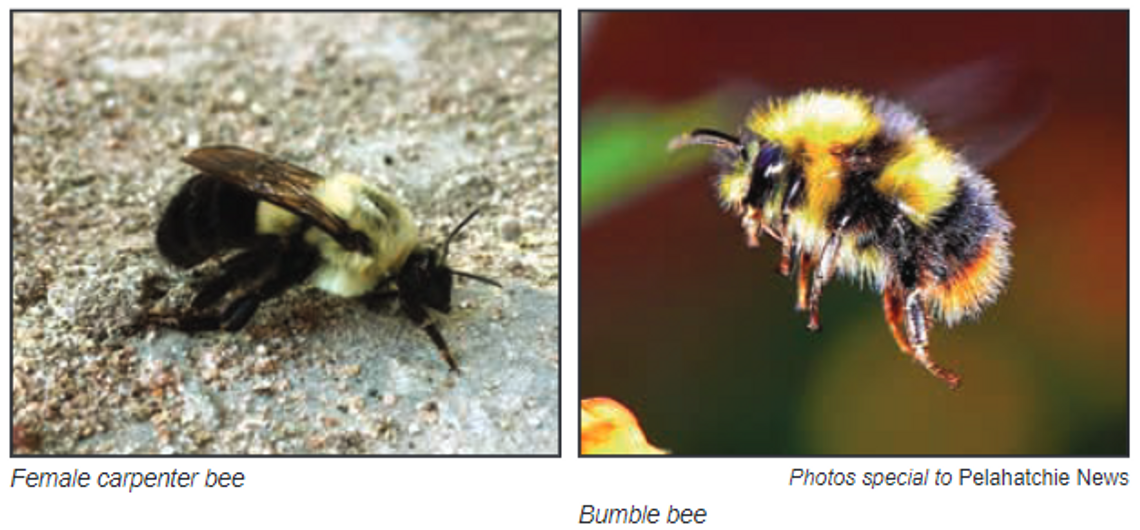In the last several years, things have gotten a little more confusing with the arrival of the giant resin bee. This is a non-native bee that looks a lot like the carpenter bee, but has a longer, more cylindrical body and a larger head. Giant resin bees do not bore into wood but they nest in holes, and they find old carpenter bee galleries to nest in. Like carpenter bees, they are not aggressive, and the stings are rare.
Although there are other carpenter bees in the state, the eastern carpenter bee is the most common. The white-faced males are hard to miss because of their habit of bussing about, hovering in mid-air. This threatens people, but the males are harmless because they have no sting. Many folks remember playing with white faced bumble bees as children.
Female carpenter bees can sting, but they are not aggressive and do not sting unless forced to do so. Females are easily distinguished from males because their face is solid black, while the males have a distinct white spot in the middle of the face. Females also behave differently than the males. Females don’t take time for the idle buzzing and aerial acrobatics like the males. They spend their time boring nesting galleries, collecting pollen and nectar to provision the gallery and laying eggs.
Carpenter bees overwinter as adults inside their wood galleries and emerge in early spring. After the females of this generation finish boring galleries and laying eggs, there will be a mid-summer lull in activity while the immature bees develop. Through much of Mississippi, a second generation will emerge in late summer to repeat the process. In the northern part of the United States, they will produce just one generation per year.
Galleries which are a little less than a half inch in diameter and can be more than a foot long are usually made in unpainted softwood lumber. They prefer pine, cypress and cedar, but will occasionally bore in other types of lumber. Timbers can be weakened by the presence of multiple galleries, and galleries can also allow moisture to enter the wood and hasten decay.
Painted or sealed wood is seldom attacked by carpenter bees, so painting or sealing the wood surface is a long-term solution for carpenter bees. When using paint to prevent a carpenter attack, it is important for the paint or sealant coat to be thick enough to totally cover the wood grain.
The most effective way to control carpenter bees with insecticide is to apply small amounts of insecticide dust directly into the galleries. The dust remains active in the galleries for many months and kills the bees as they come and go and come in contact with it. Female bees are killed when they return to the gallery, and newly hatched bees are killed when they emerge.
Source: Bug-Wise, Mississippi State
University Extension, No. 5, April, 2011.



Comment
Comments